The Mission
The Summits4Sight Project was named accordingly based on a plan for Simon Prosser to climb four Nepalese mountains to raise awareness to AMD. With each climb the height of the mountain, and the scale of the challenge increases leading up to the toughest challenge of them all, Mt. Kangchenjunga, the world’s 3rd highest mountain after Mt. Everest and K2.
The Four Summits
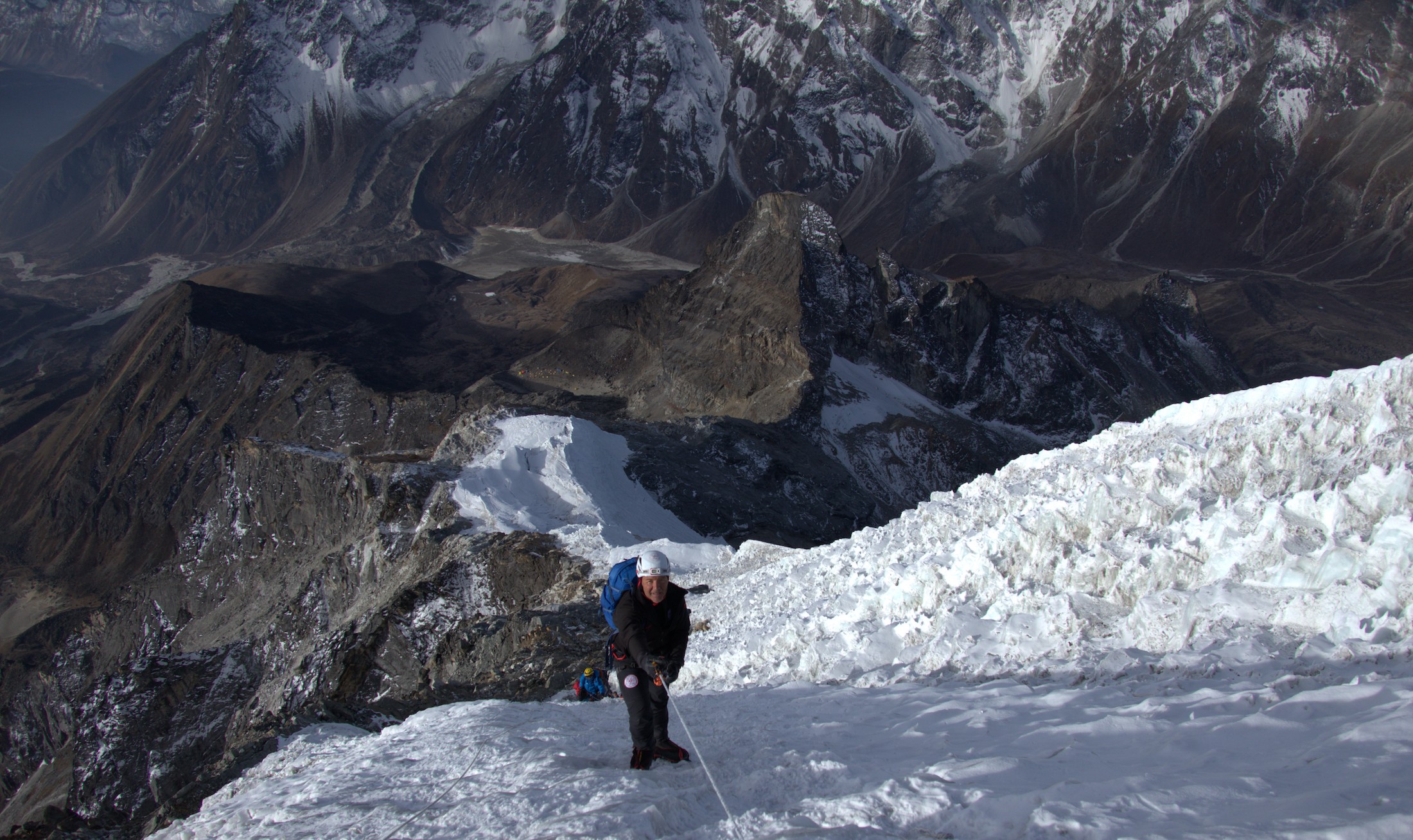
The ascent on Lobuche.
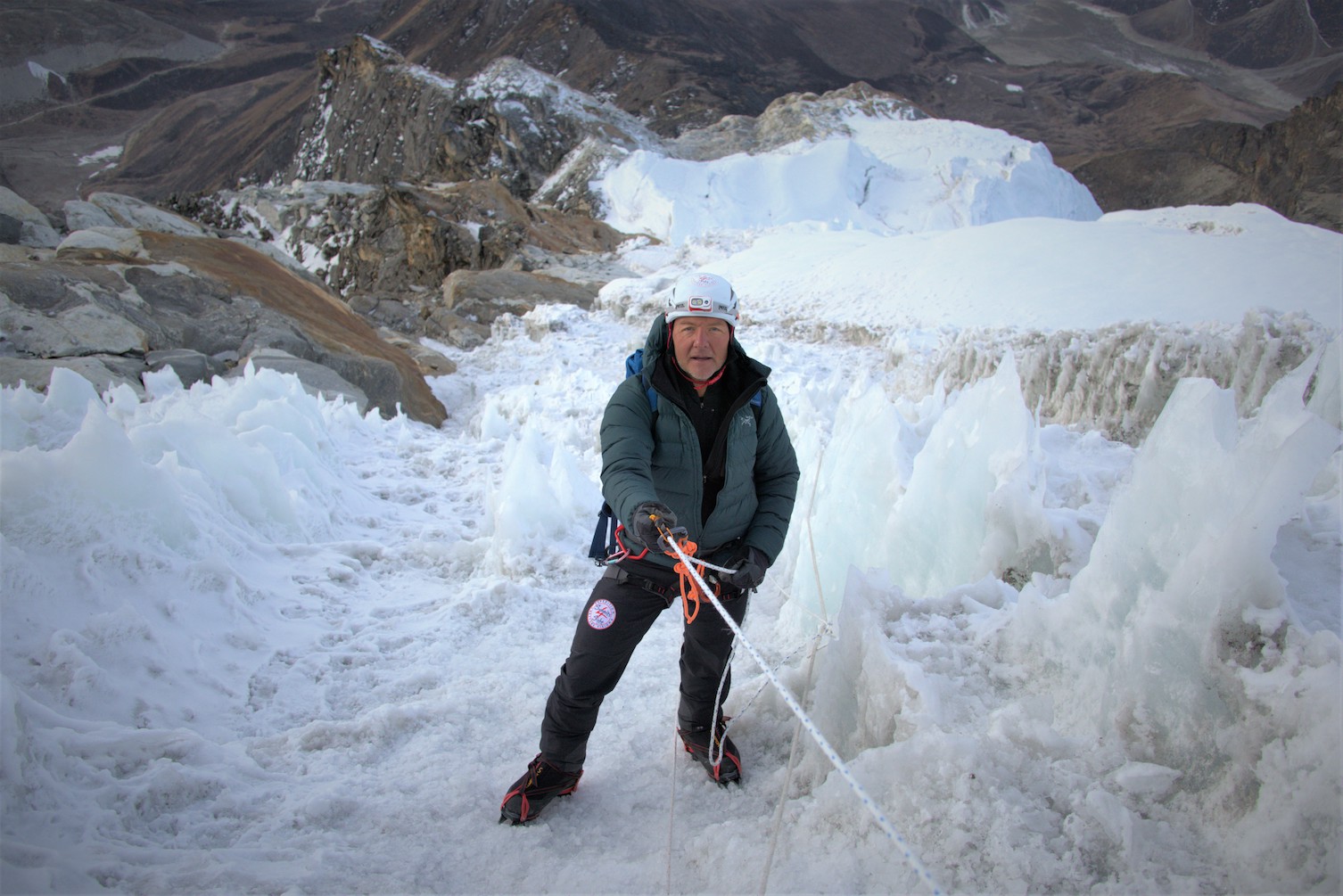
Climbing Lobuche.
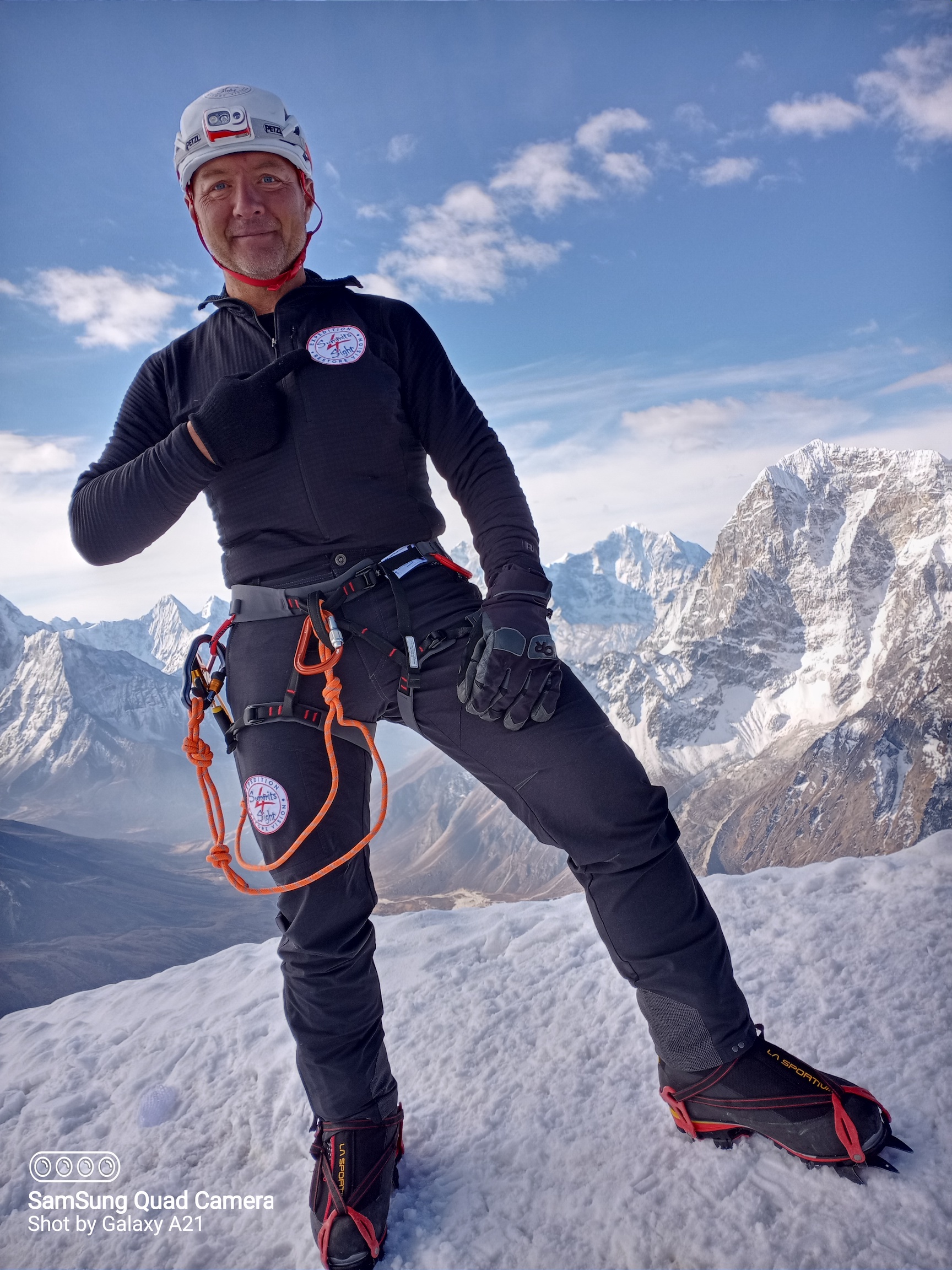
On the Lobuche peak.
Lobuche
April, 2021
20,075 ft.
Reaching 20,075 feet above sea level, Lobuche, from a technical standpoint, is not the most difficult mountain to conquer but nonetheless, due to the altitude, a very strenuous and demanding first climb, especially if you have never been to that altitude before. It would set the scene and test me for the higher peaks that are to follow.
At 7.30 A.M. on April 21, 2021 I successfully reached the summit in record time. It was the very first time I had been to that altitude and it felt truly amazing to see what you can achieve when you prepare well and set your mind to it. More importantly, it demonstrated that I was up to the challenge and had not let anyone down.
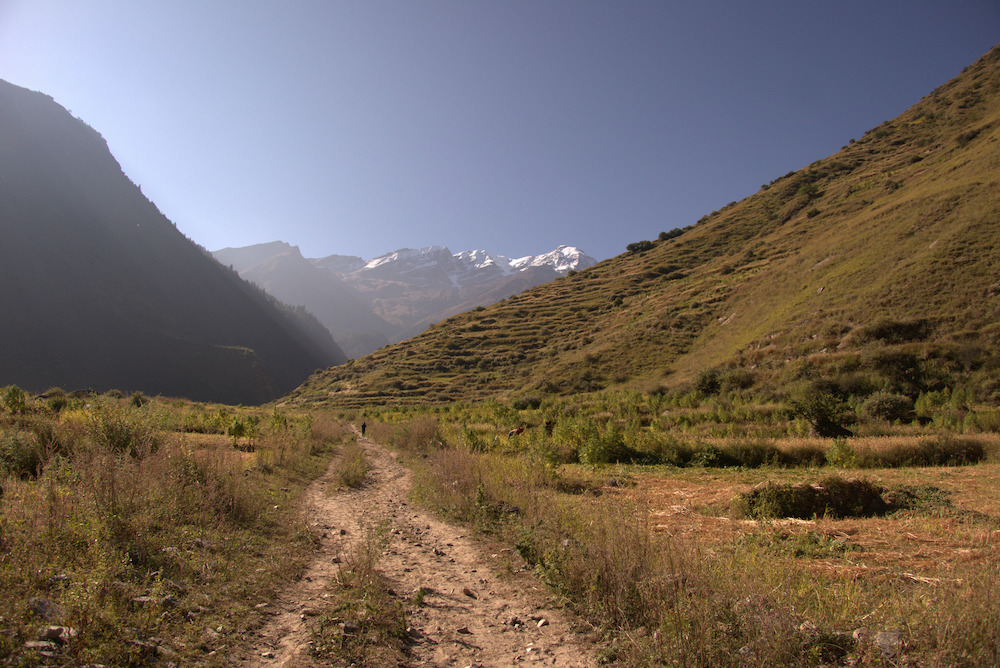
Trail trekking towards Putha Hiunchuli.
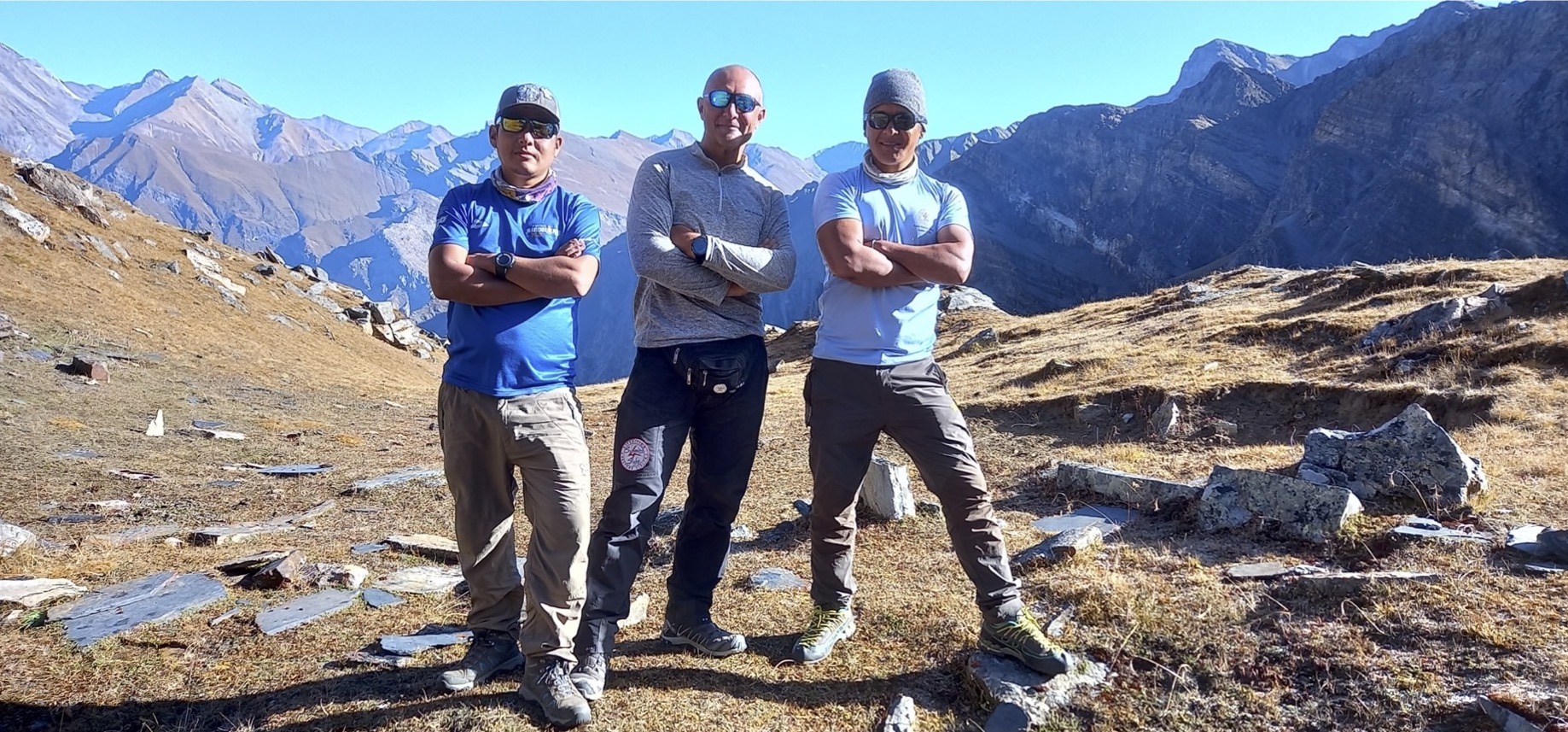
Team picture for the summit.
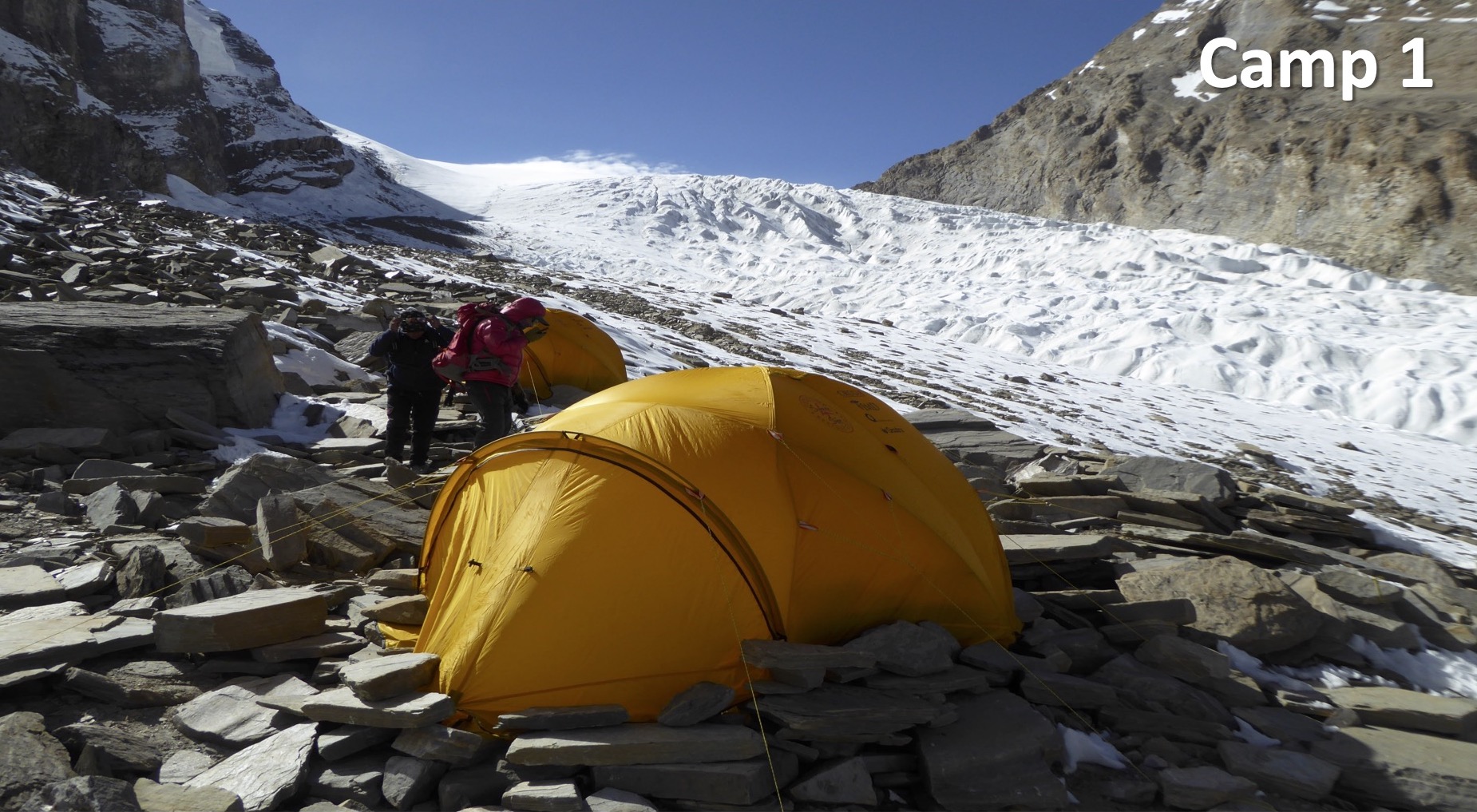
Picture from Camp 1.
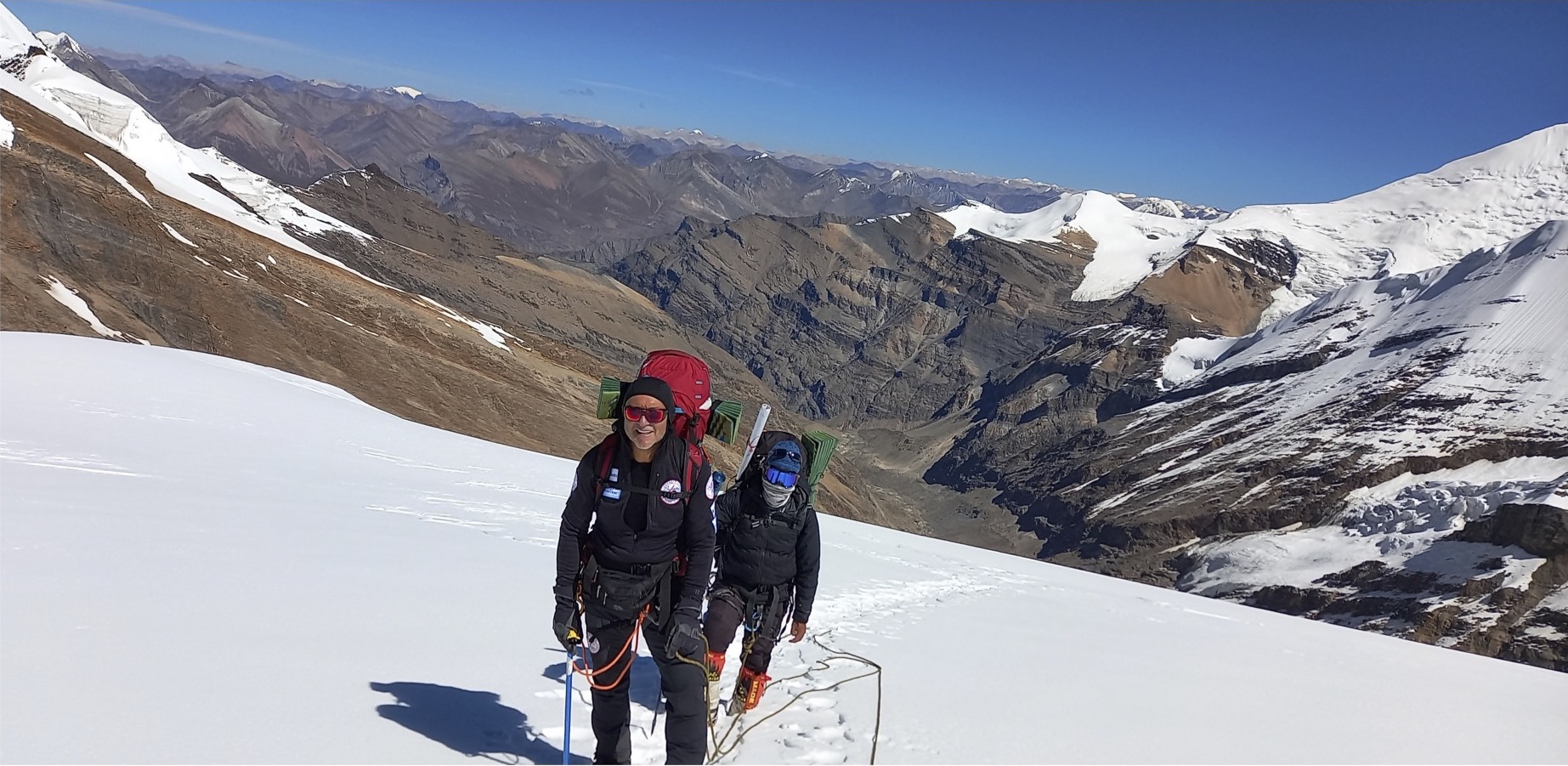
Heading towards Camp 2.
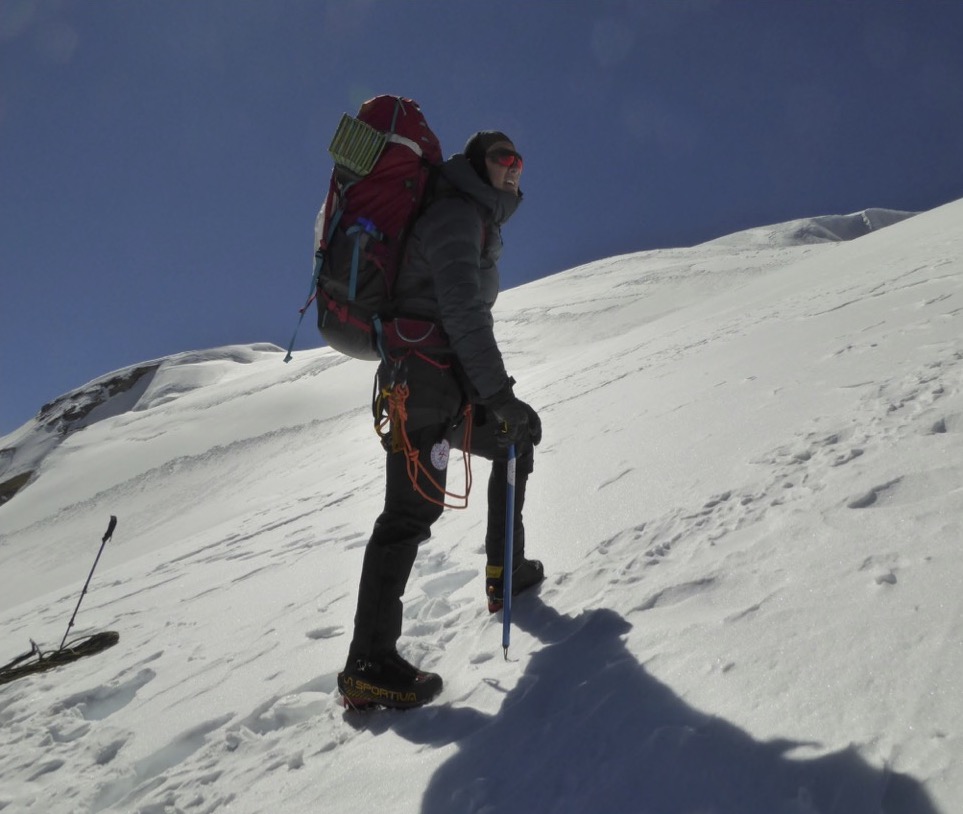
Leaving Camp 2.
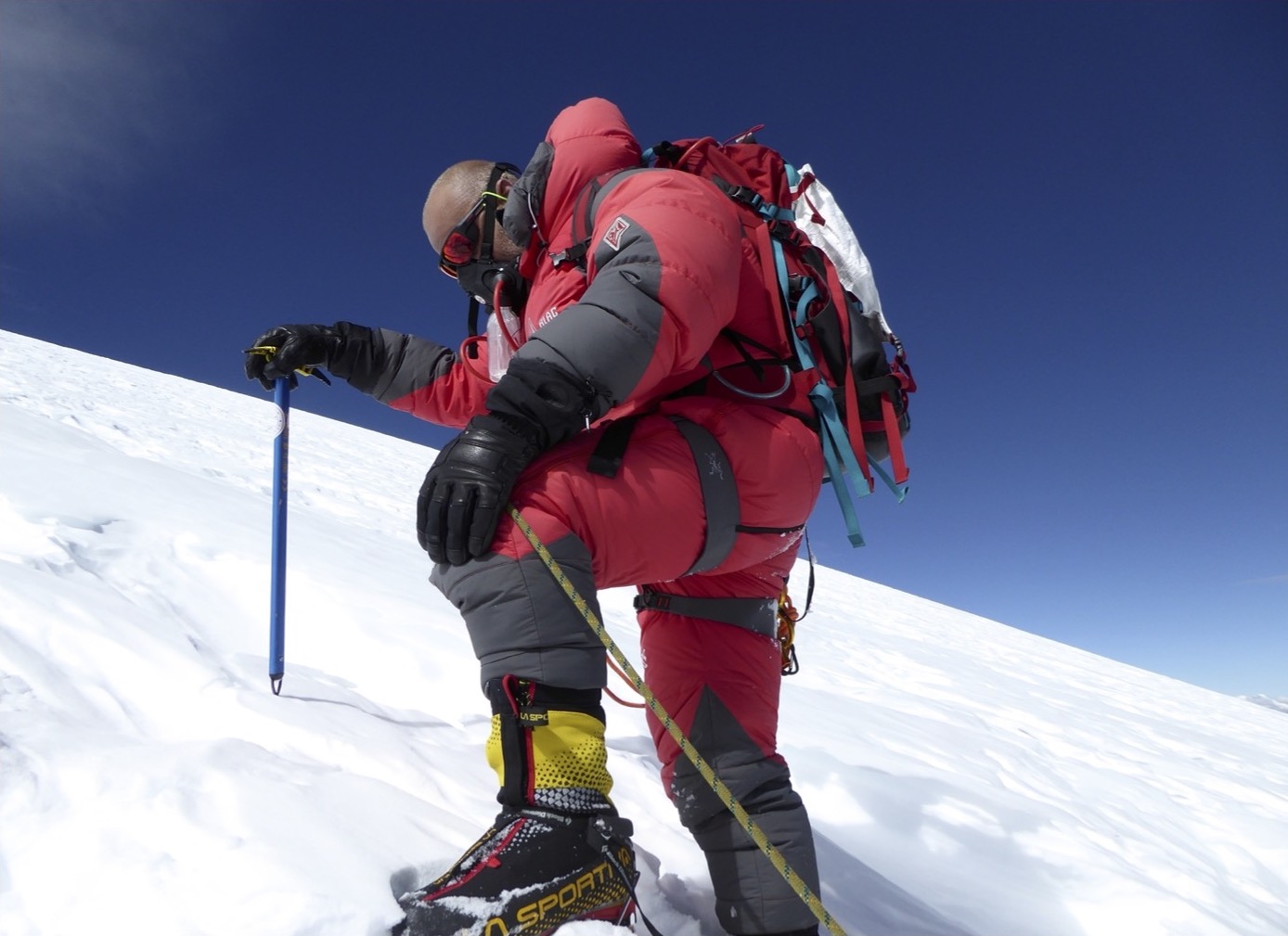
200 meters from the summit (with Oxygen).
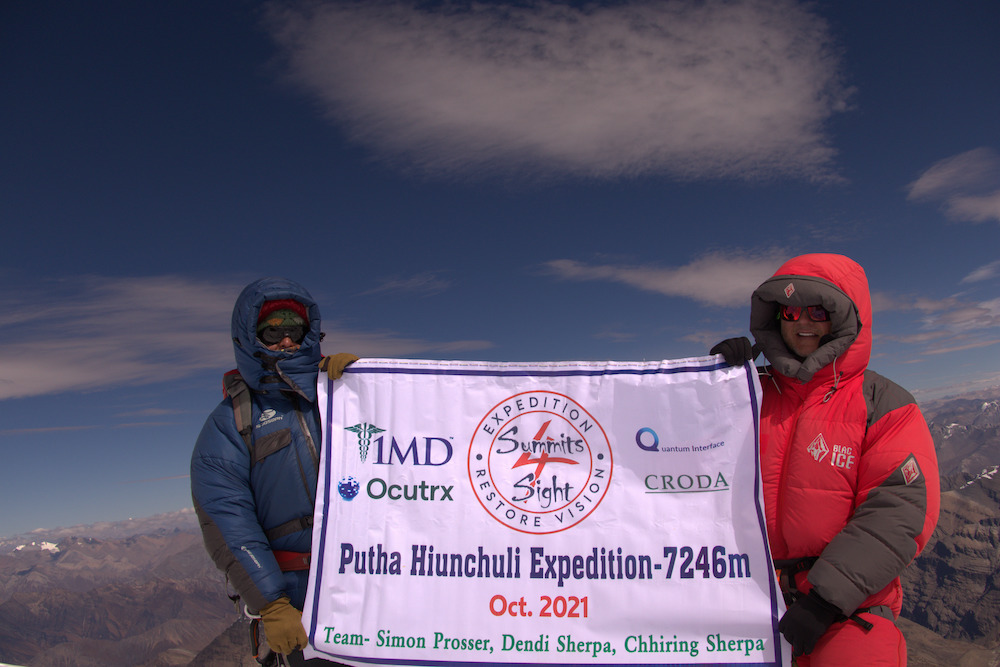
Storm approaching at the summit.
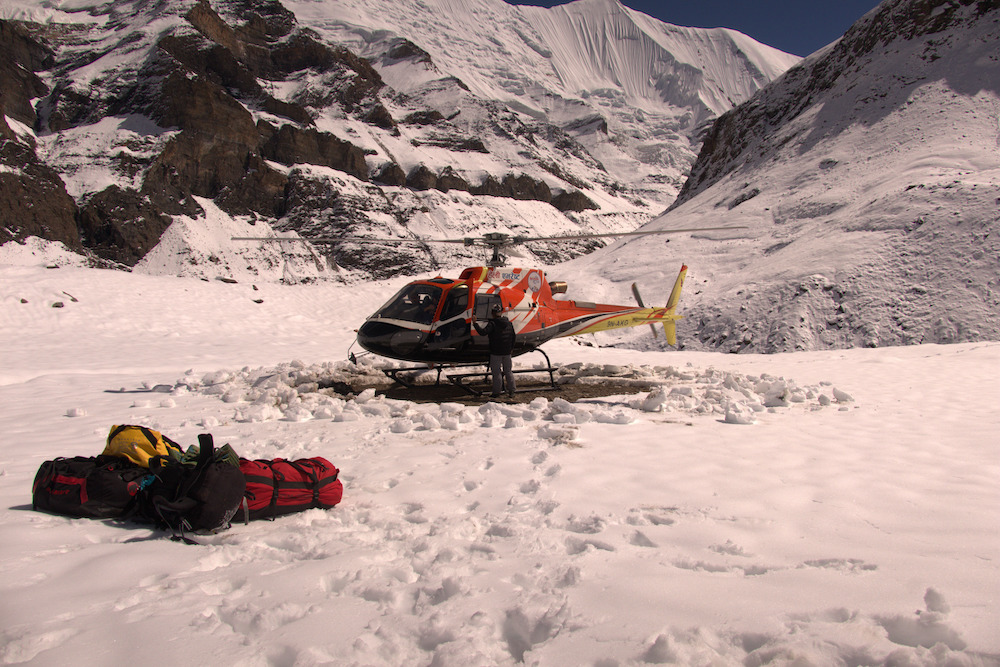
Helicopter arrival at Base Camp.
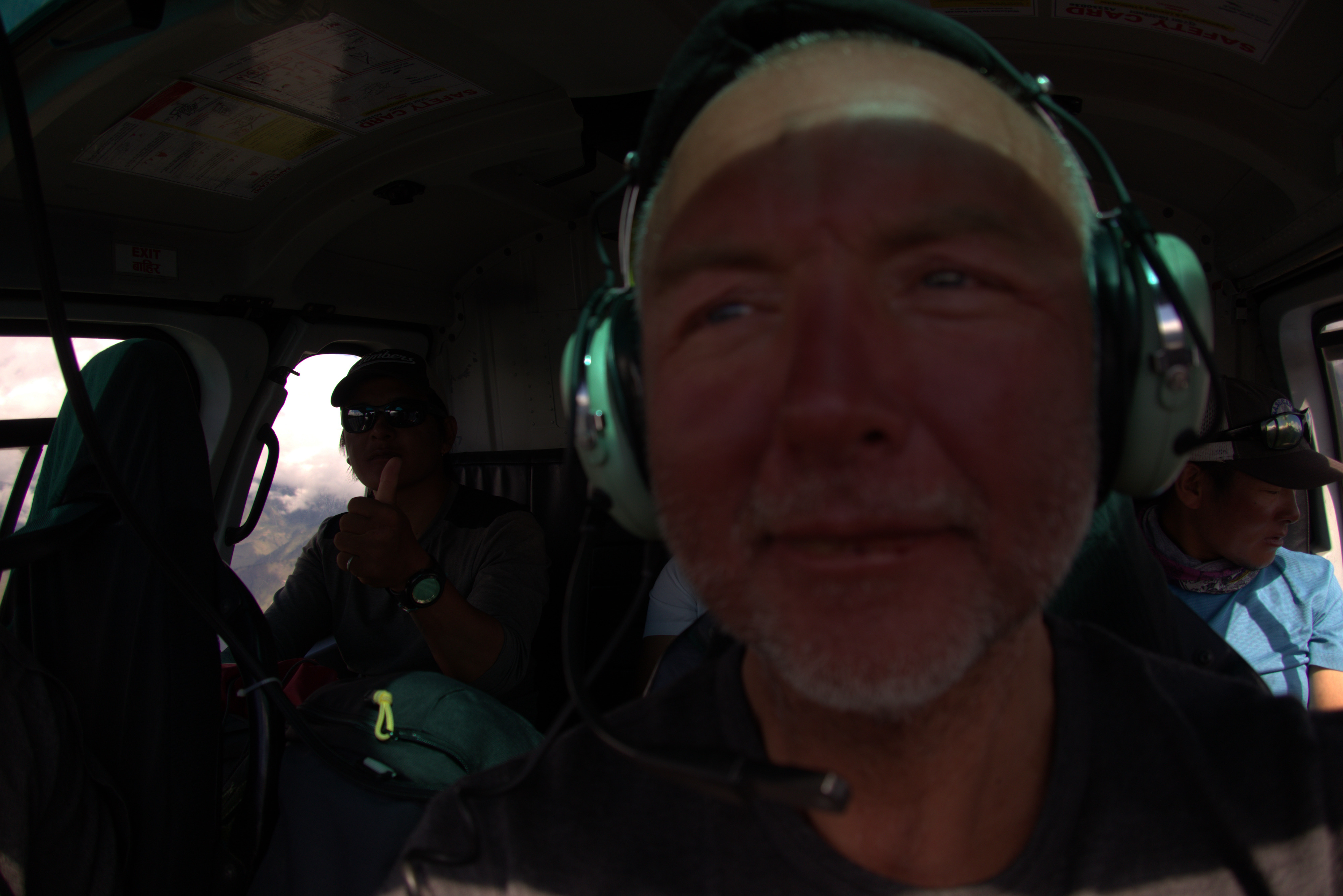
In the helicopter, on the way to the hospital.

Hospital arrival picture.
Putha Hiunchuli
October, 2021
23,773 ft.
On October 17, 2021, Lead Sherpa Dendi, Assistant Sherpa Cherring and myself successfully summited the 23,773 feet peak of Mount Putha Hiunchuli in the Nepalese Dhaulagri Range. However, success came at a price.
Arriving in Jhupal on October 5, 2021, our 8-man expedition team trekked through the valley under blue skies and warm sunshine towards Kakot and up to the Putha Hiunchuli Base Camp at an elevation of just over 16,200 feet above sea level. On October 11, at Base Camp, we received word of a changing weather pattern with a severe late monsoon storm due to come in on or around October 16, 2022.
Based on this information we needed to modify our ascent plans and shorten the time it would take to reach the summit. Reducing the time for acclimatization would significantly increase our risk for mountain sickness, so the game plan was to summit and then race back down to Base Camp as quickly as possible to mitigate this danger.
At 11 P.M. on October 16, we left Camp 3 and began our final push towards the summit. Difficult ground conditions and strong winds slowed our ascent and by the time we reached the summit, we could see the weather front rapidly approaching on the horizon. Less than an hour after our brief stay at the summit, the weather quickly began to deteriorate, turning into a severe blizzard with white-out conditions. We struggled for what seemed to be an eternity and finally reached our snow-buried tent after more than 20 hours since we had left Camp 3.
We couldn’t afford to stay for very long and knew that we needed to reach lower altitude quickly. We were all showing signs of high-altitude sickness but my condition was the worst and deteriorating by the hour. With just a few hours of rest, we continued on in heavy accumulating snow and struggled to see our way back down towards Camp 2 and eventually Camp 1. Miraculously, after 18 exhausting hours, we reached Camp 1. By this time, I was suffering from Acute Mountain Sickness and was unable to continue on down to Base Camp. We rested for almost 20 hours before being able to attempt a final descent back to the relative safety of Base Camp where the rest of our team was waiting. That last trek took another 14 hours, a journey that had taken just 2.5 hours a few days before. In the dark, late on October 20, 2022 and with the weather finally clearing, we reached Base Camp after 3 days battling to stay alive. The next morning, a helicopter was called for me to be medically evacuated down from Base Camp to Kathmandu where I spent 3 days in the hospital undergoing treatment with a further 6 days rest in my hotel before being able to fly home.
Having faced life threatening difficulties, I am pleased to know we were successful in our Putha Hiunchuli summit bid- and lived to tell the tale. And I am so very grateful to have been on the mountain, under those conditions with 2 amazing Sherpas, without whom, I may not have survived. Taking a 2 month break upon my return from Putha Hiunchuli I have since returned to full training and am looking forward to the next challenge – Mount Manaslu – my first 8,000 meter mountain.
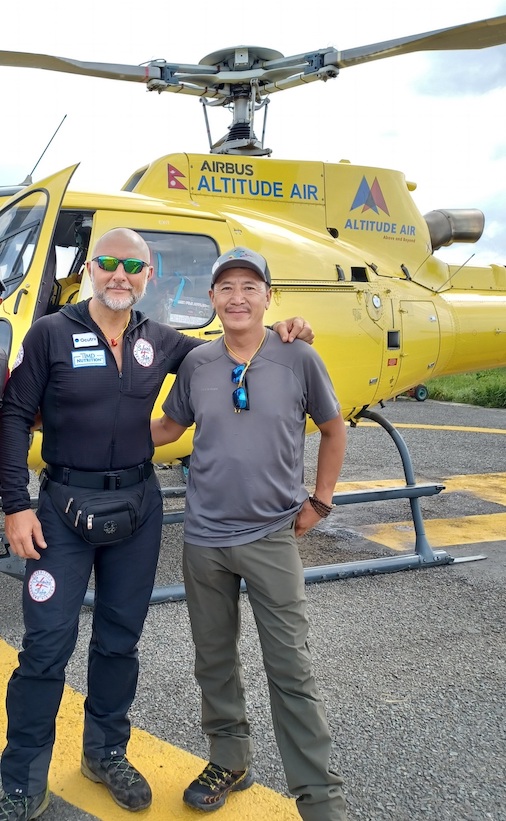
KTM to Manaslu with Pasang Sherpa.
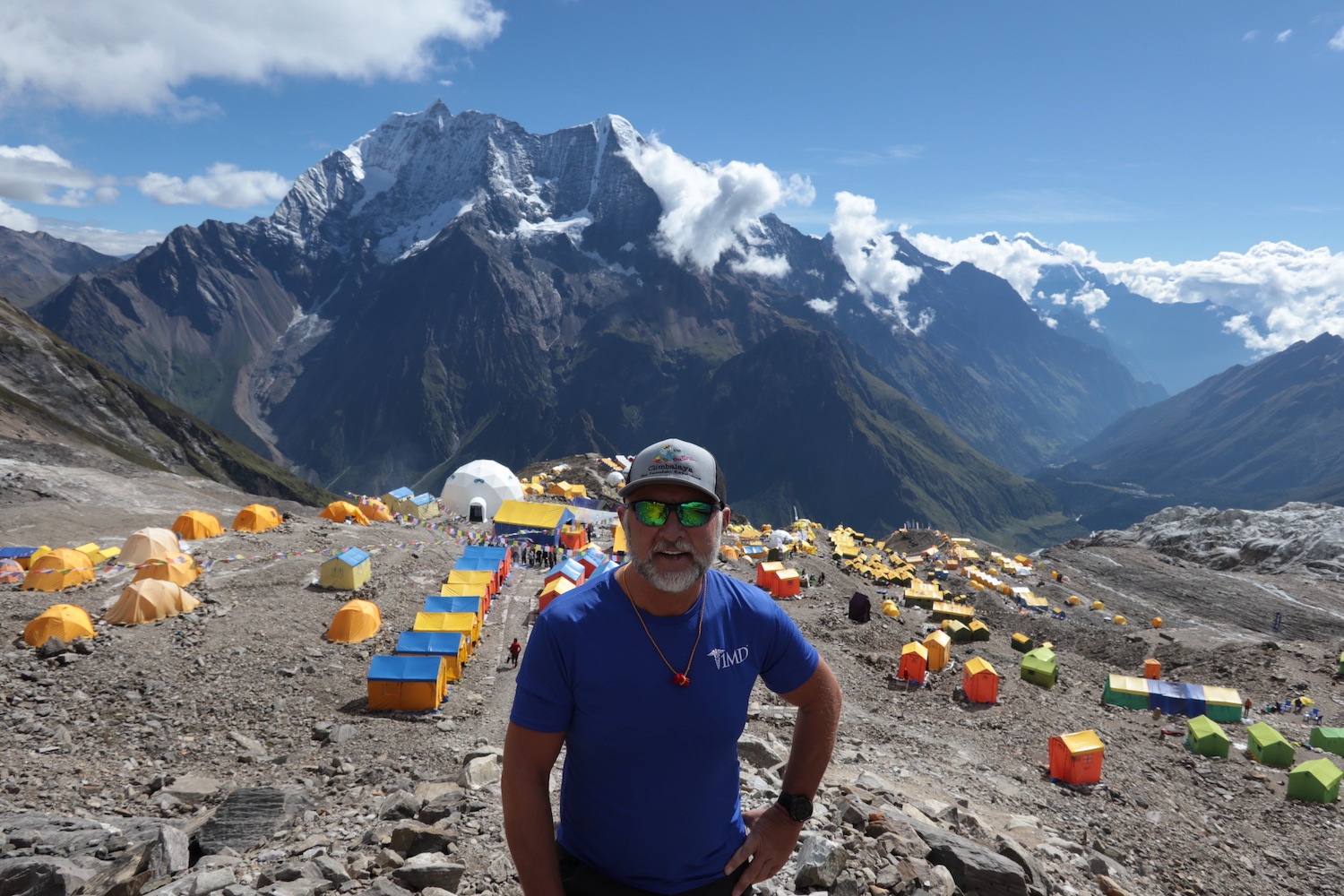
Manaslu Base Camp.
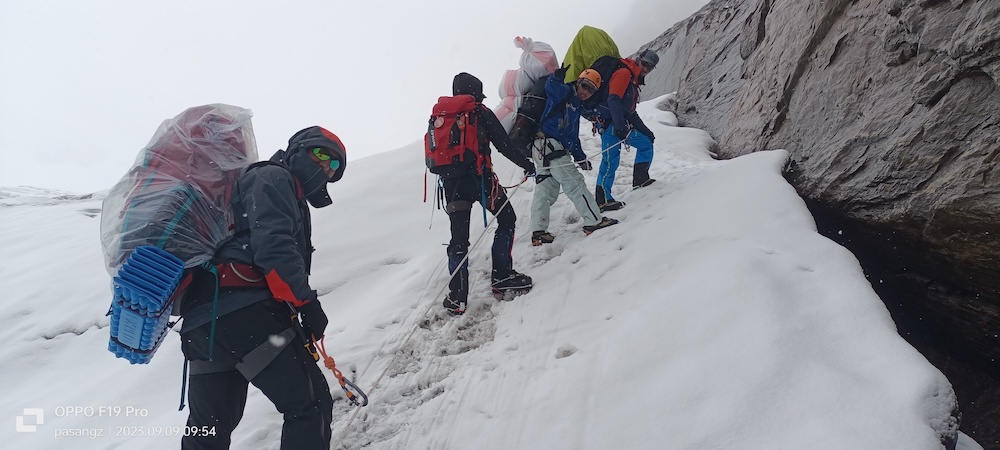
Leaving for first rotation.
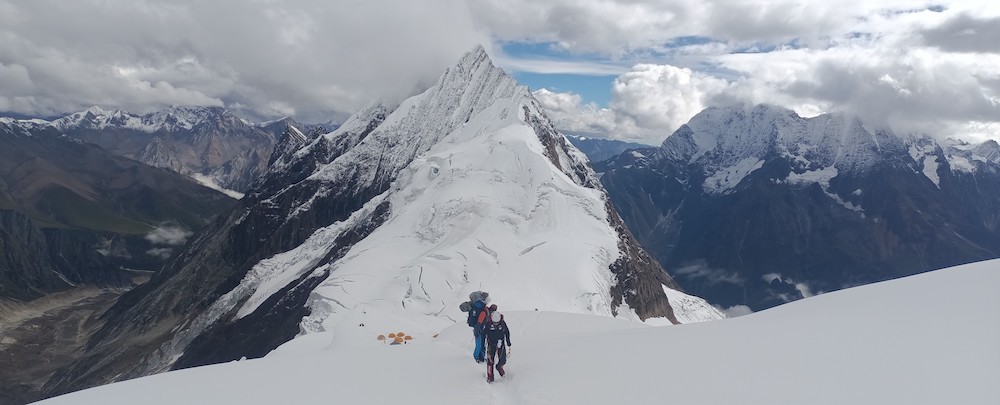
Leaving Camp 1, enroute to Camp 2.
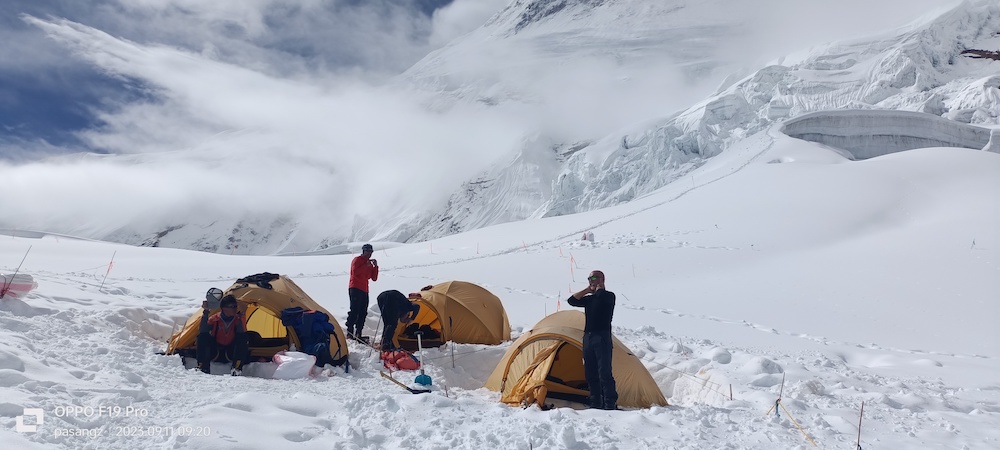
Lonely Camp 1.
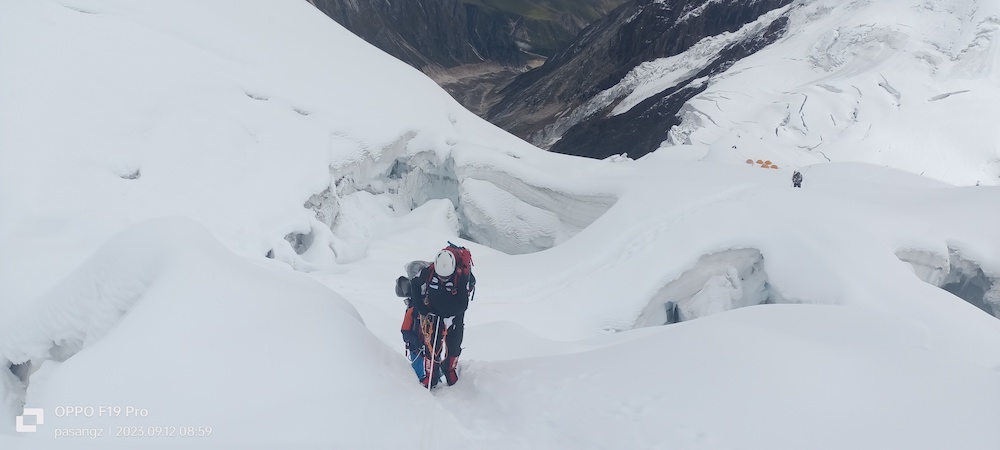
Camp 1 to Camp 2 through the icefall.
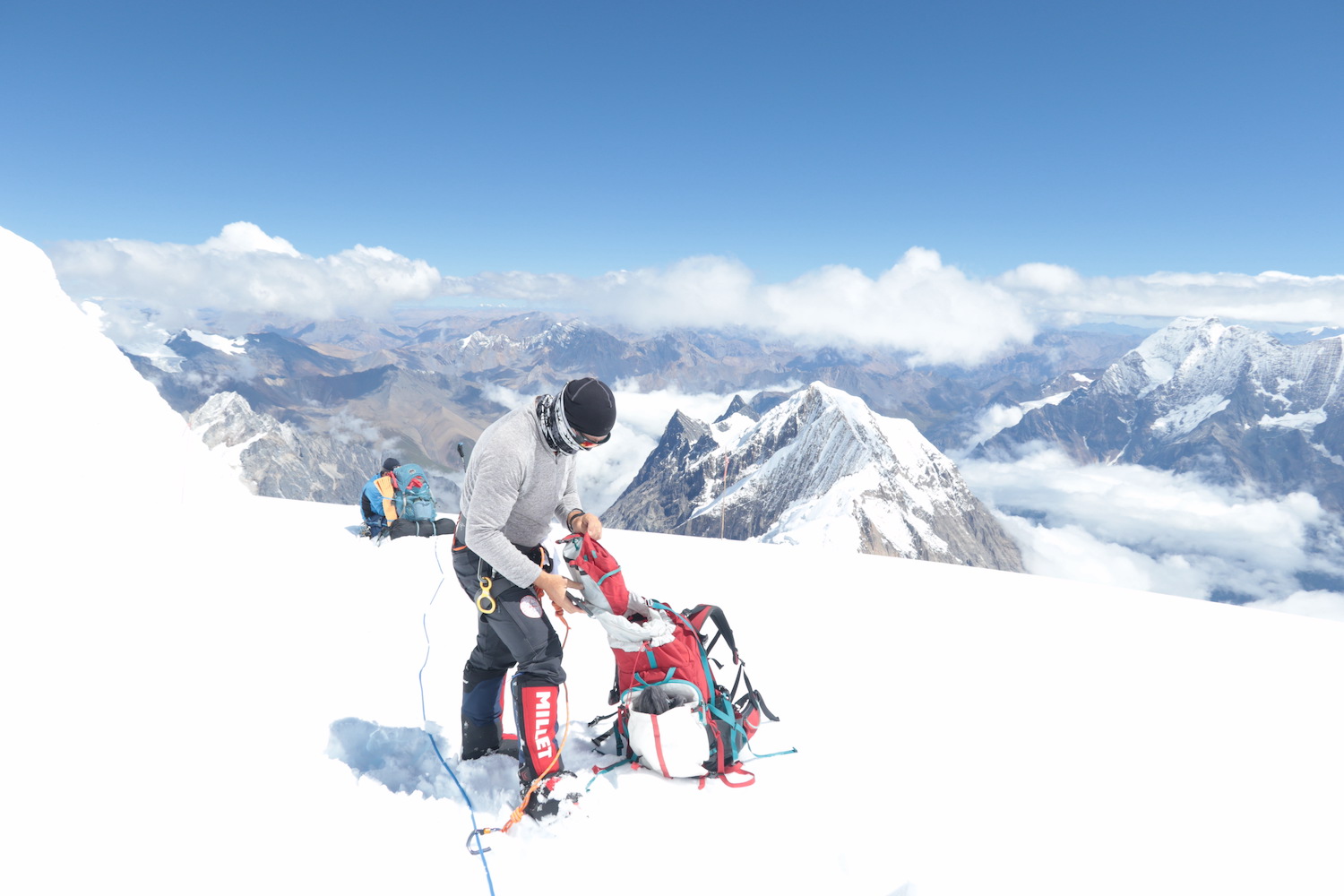
Arrival at Camp 3.
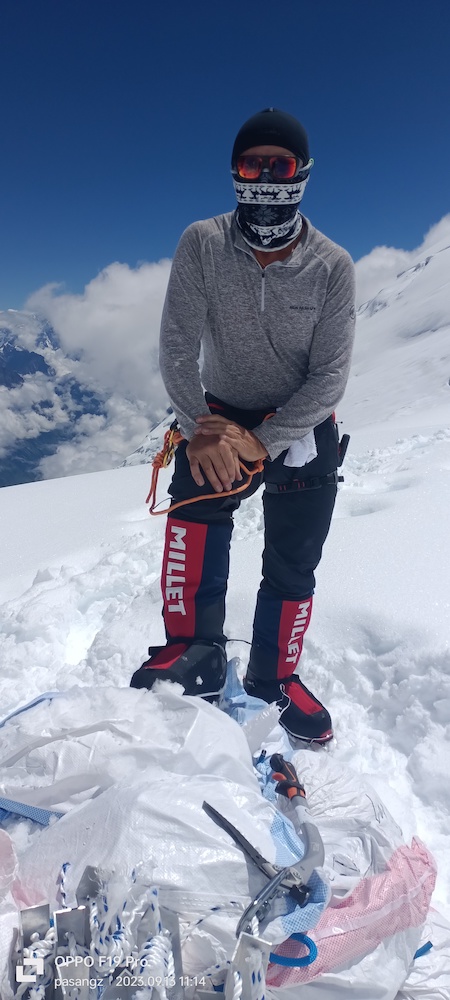
First climber to reach Camp 3.
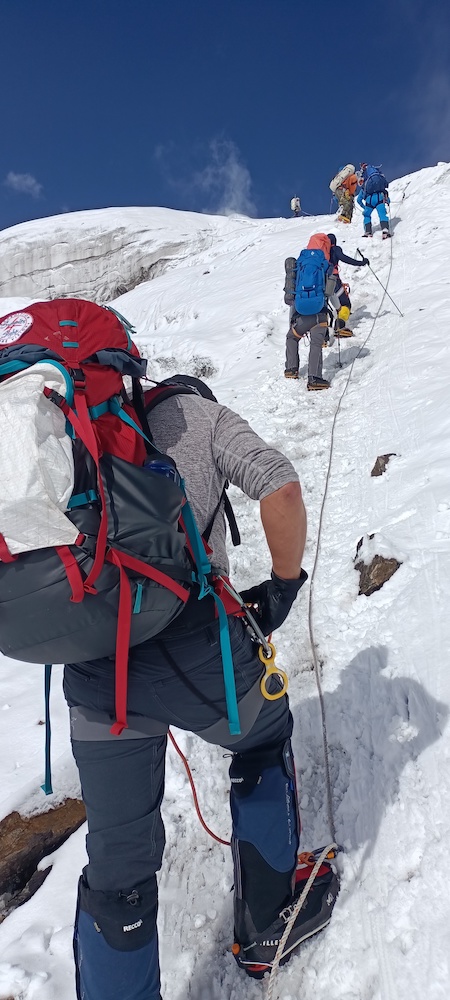
Heading back up the mountain.
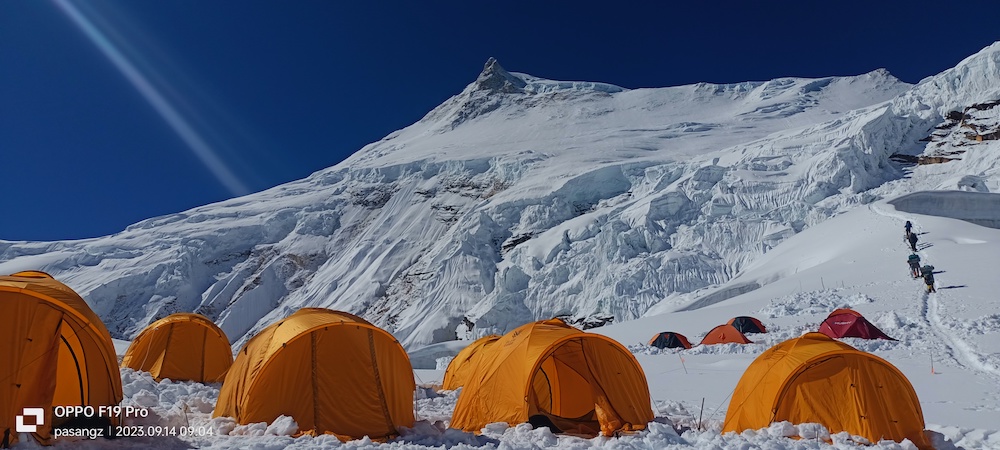
Perfect weather at Camp 1 for our hike to Camp 2.
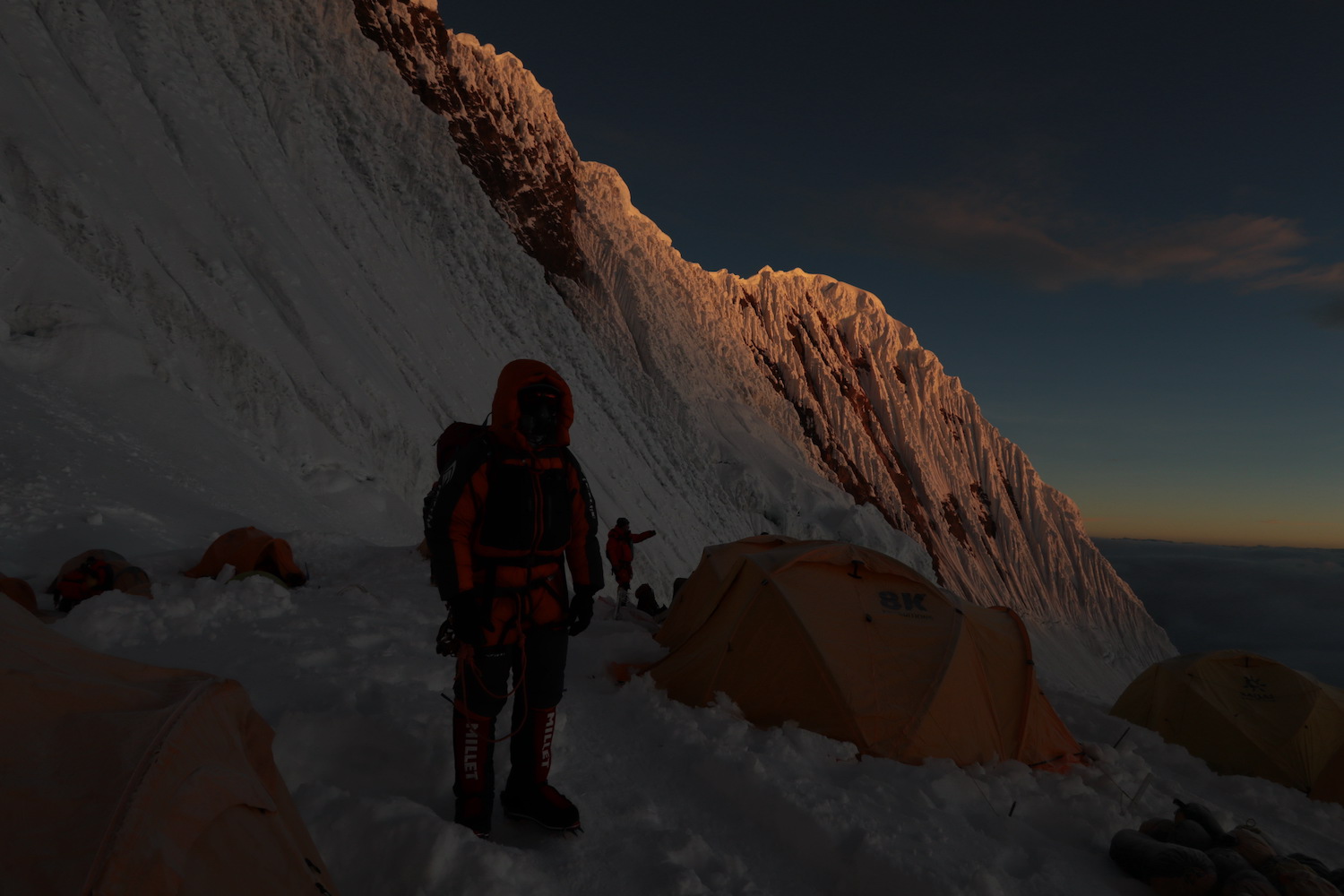
Camp 3 ready to go to Camp 4 with oxygen.

Long and steep hike from C3 to C4.
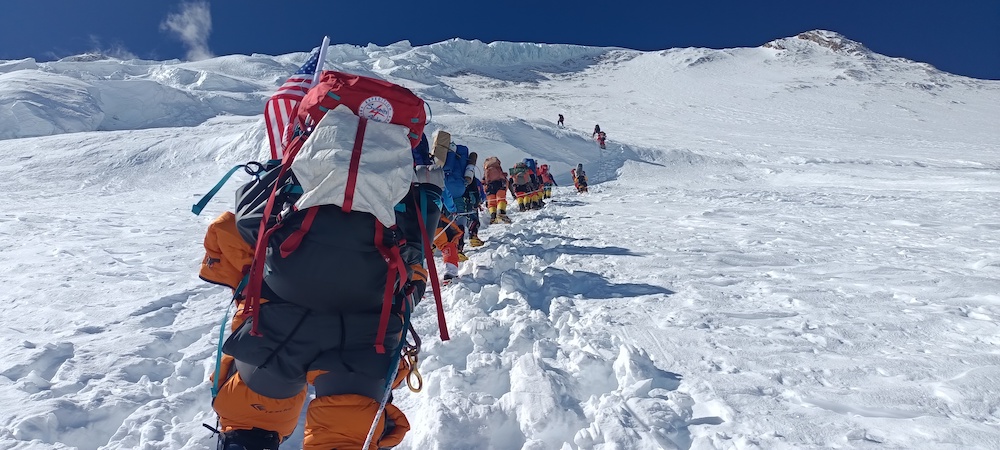
Closing in on Camp 4.

Arriving at Camp 4.
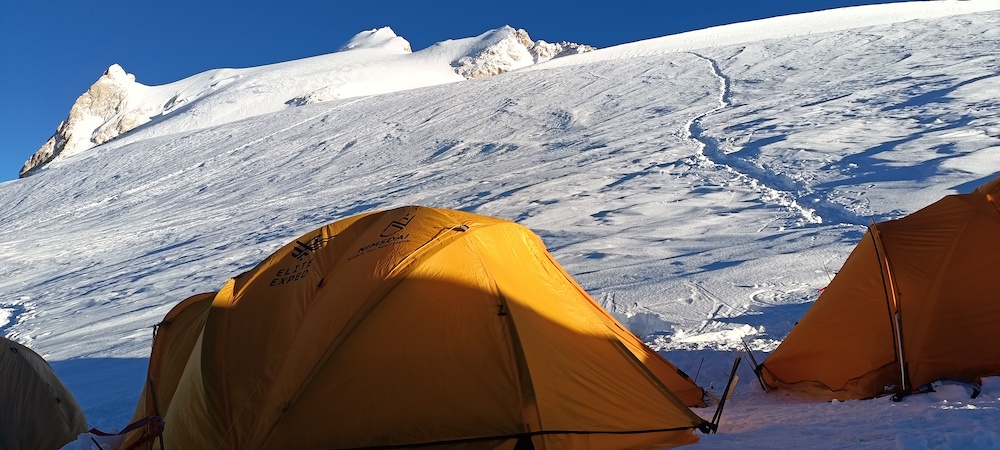
View from Camp 4 up to the summit.
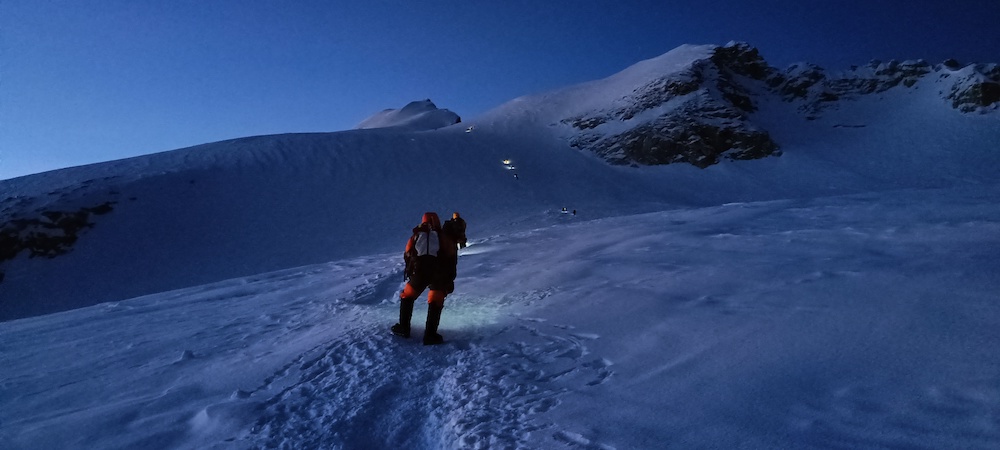
Leaving Camp 4 for the summit.
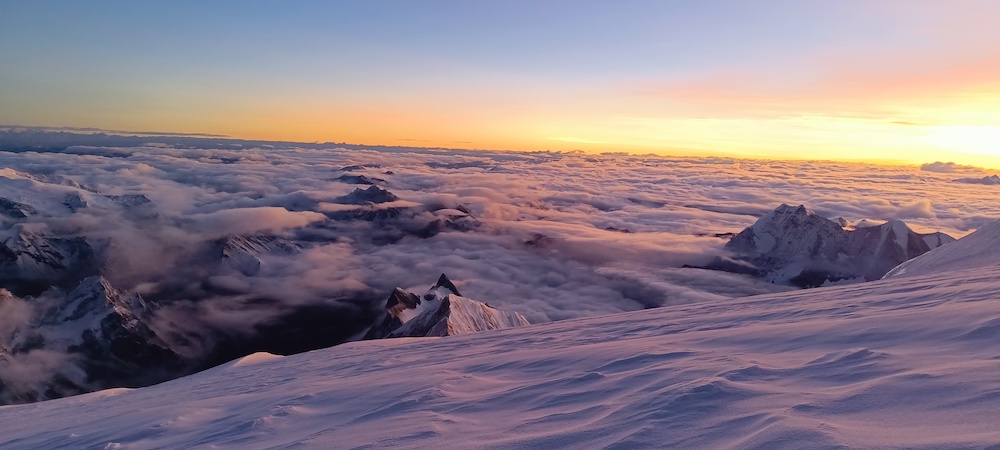
Leaving Camp 4 for the summit.
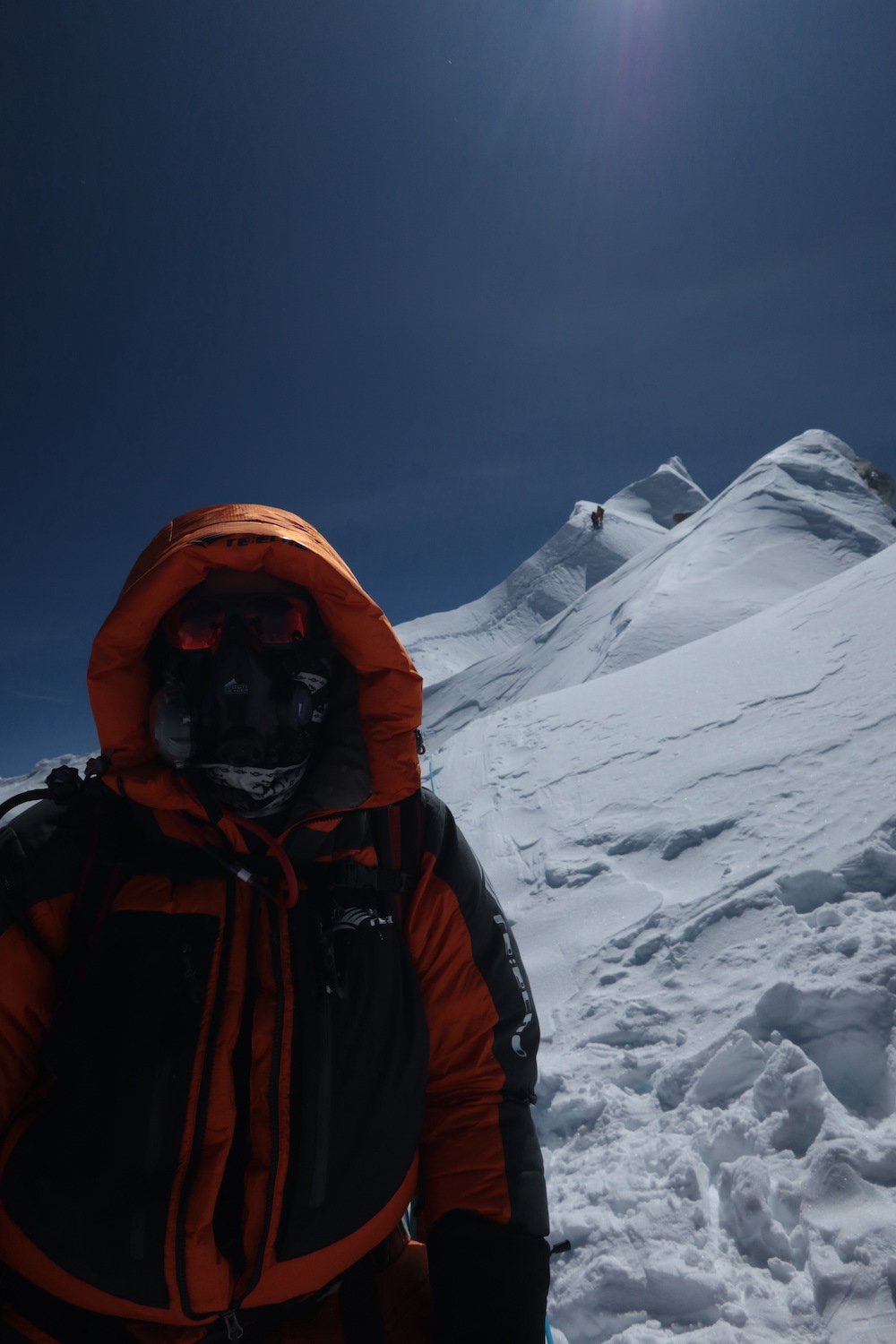
CLosing in on the summit.
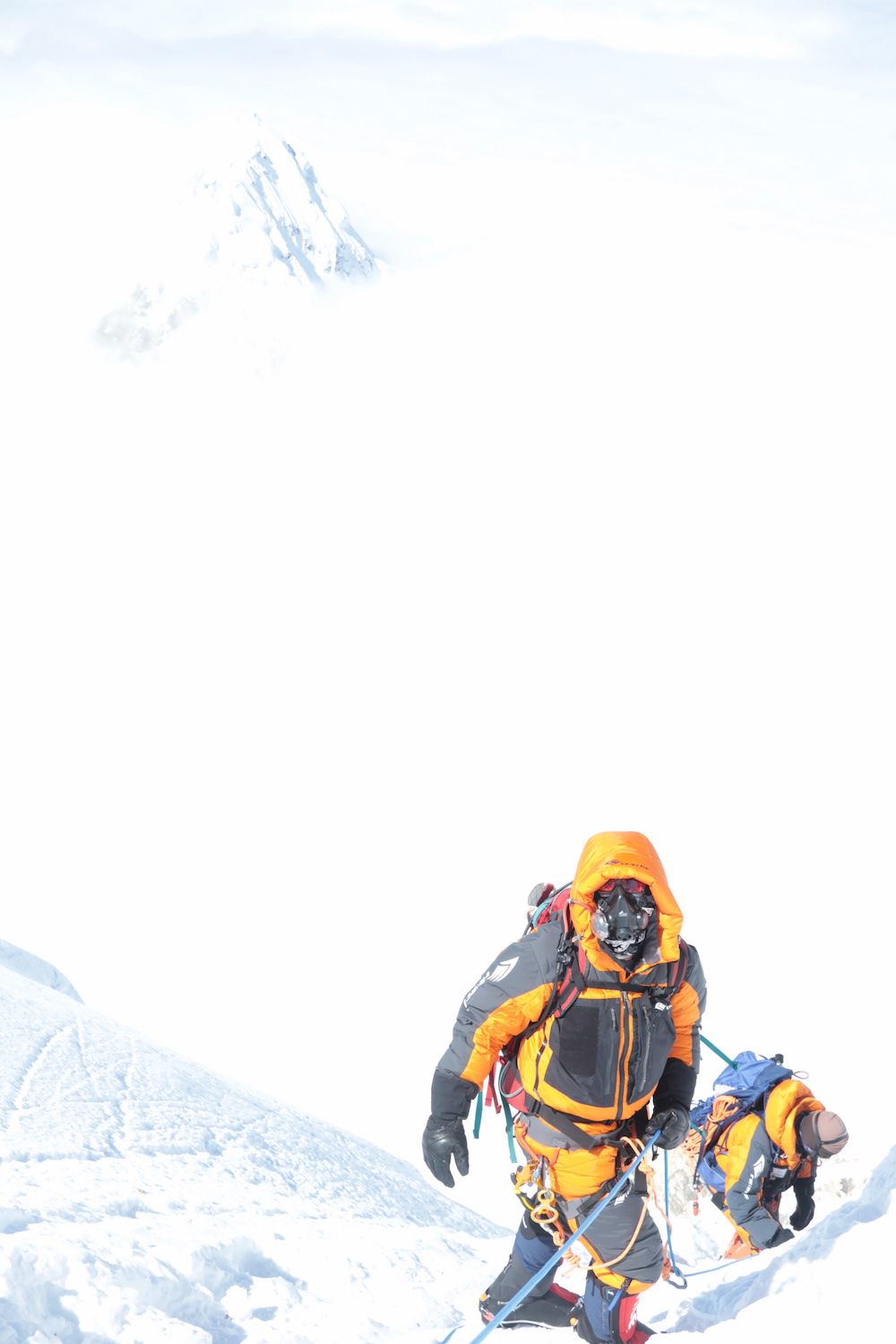
Almost at the summit.
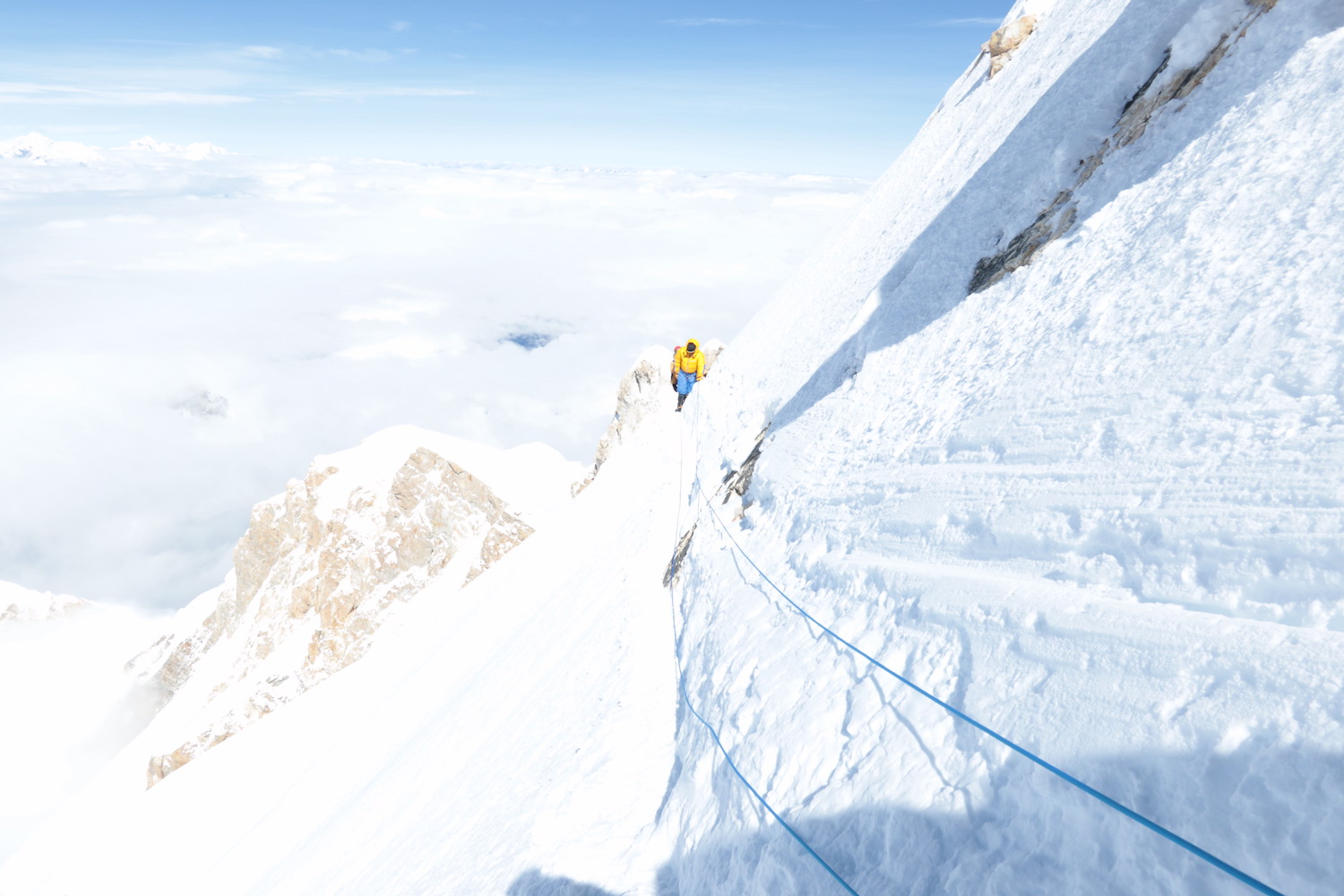
Narrow ledge leading to the summit.
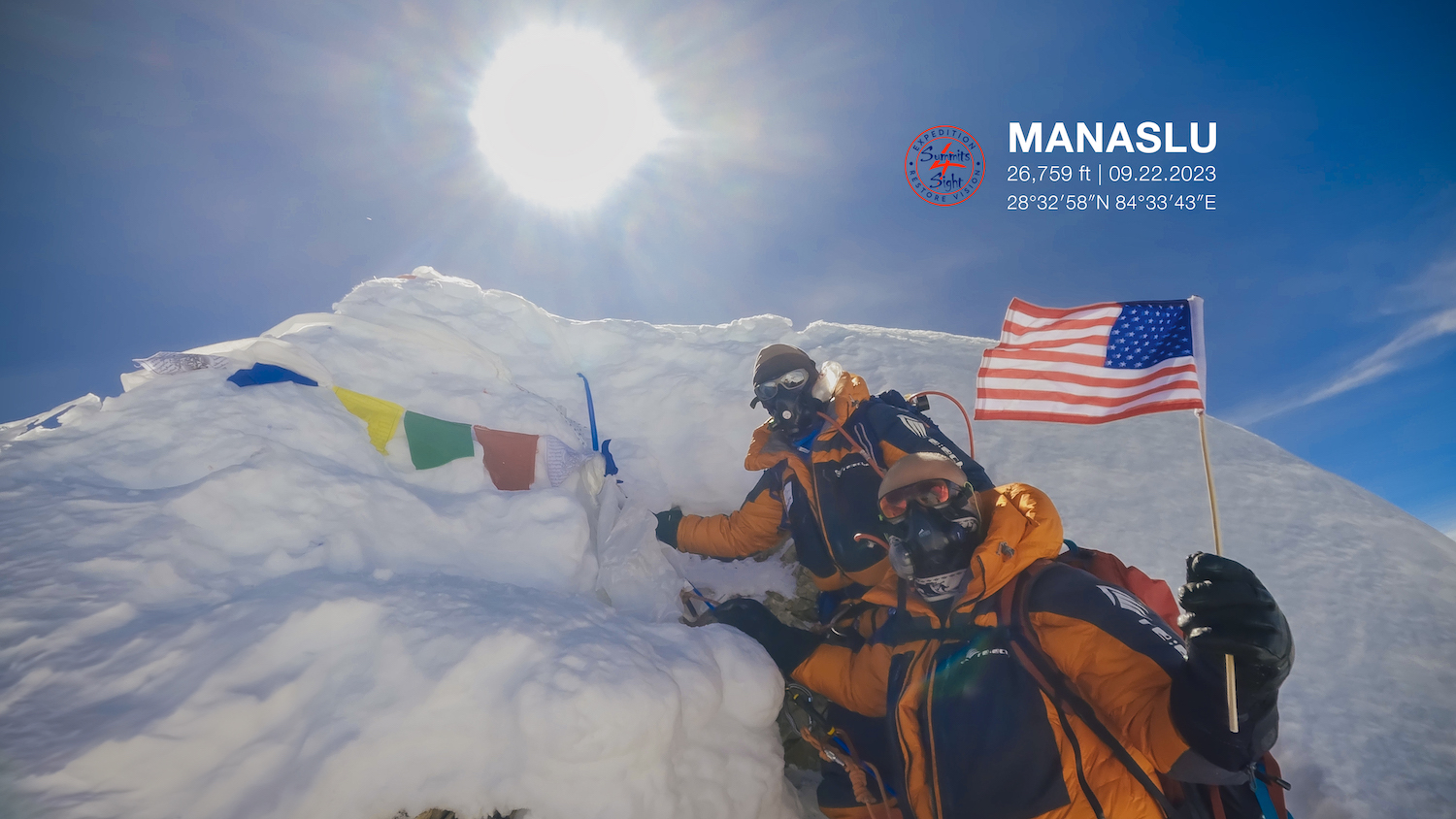
Summit success.
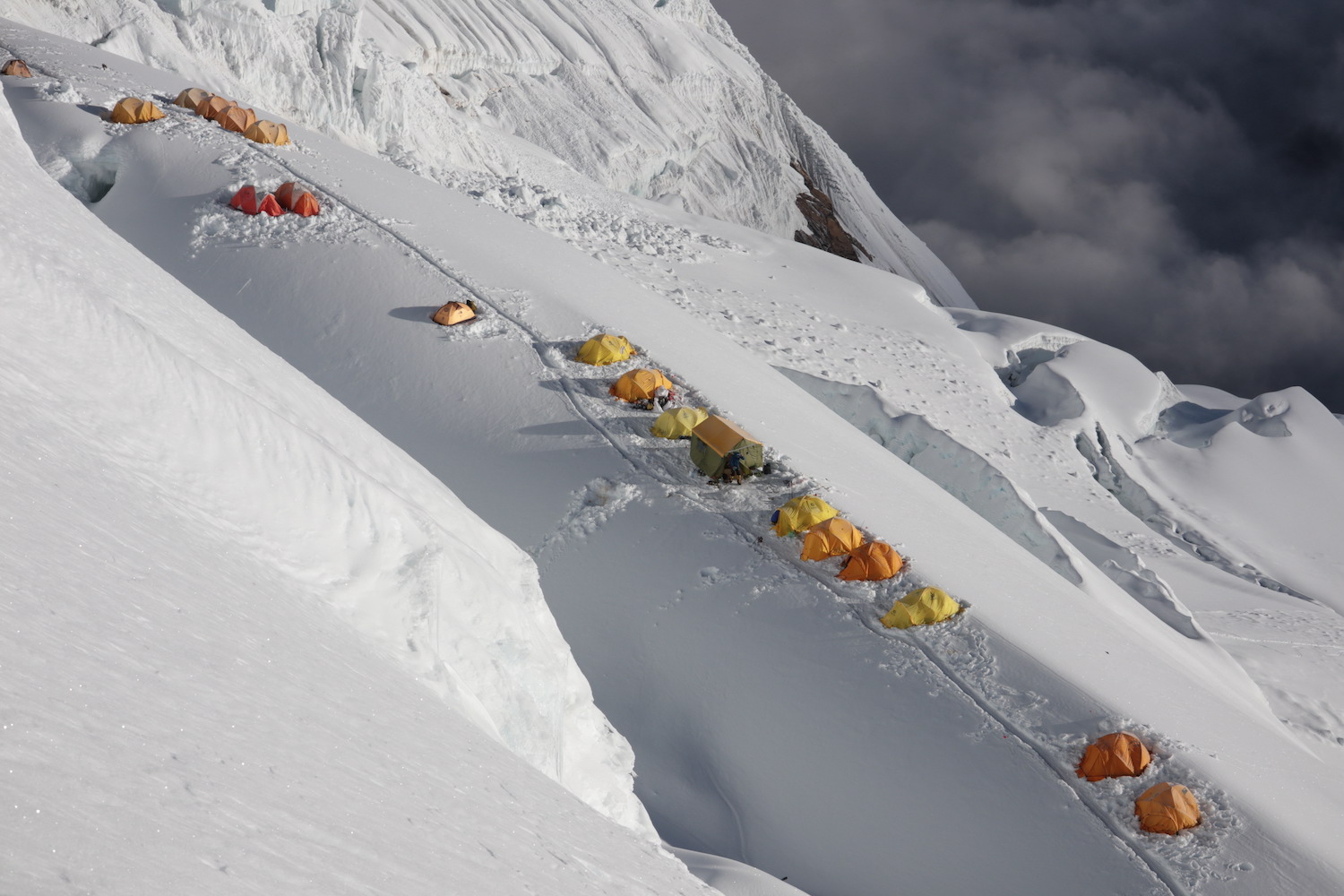
View of Camp 3 on our way back down from the summit.
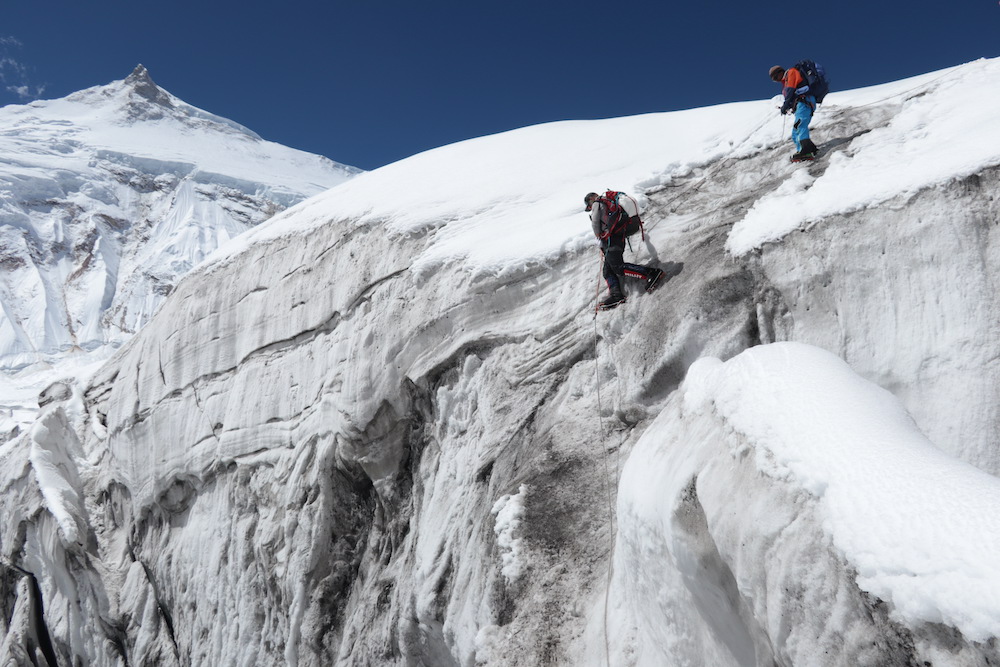
Enroute back to MBC.
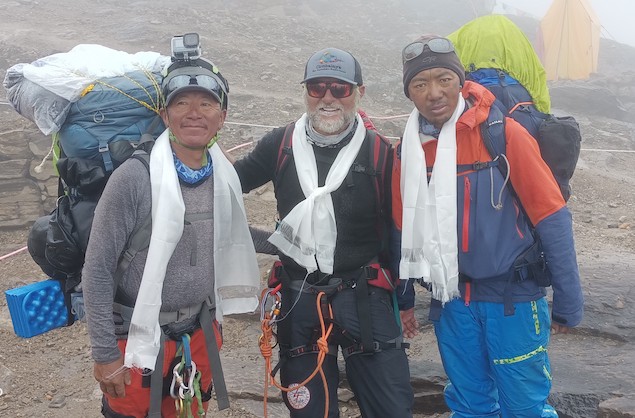
Back at MBC with Sherpas Pasang and Pema.
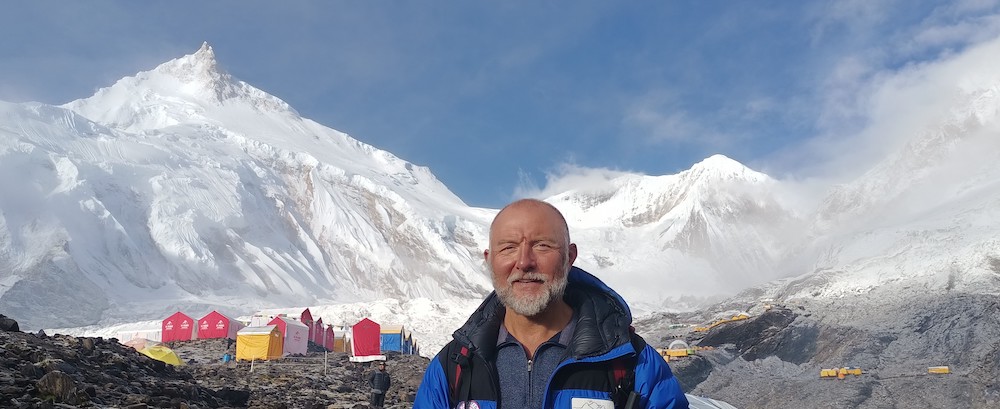
Final view of Manaslu before leaving MBC for the very last time.
Manaslu
October, 2023
26,759 ft.
In accordance with the original summits4Sight climb plan, Manaslu – climb No. 3, was scheduled for the Fall of 2022. My team and I were there. Despite unusually treacherous weather and ground conditions we reached above Camp 3 with the summit within our grasp. Sadly, as the tragedies of 2022 unfolded, our team experienced the horrific loss of one of our Sherpas, caught by an avalanche for which Manaslu is notorious. In total, 5 people lost their lives on Manaslu in 2022. Many more were injured, most in an avalanche that completely wiped-out Camp 3 early on. That last day above Camp 3 has haunted me ever since. But we made the right decision to turn around. As so often during the 2022 expedition, heavy snowfall had completely hidden all the safety lines. Strong winds and a cyclone coming in from the Bay of Bengal in the coming days dictated that decision for us. The 2022 Manaslu summit attempt was over. Sometimes, the mountain wins. Turning around and accepting defeat was one of the most difficult moments in my life. For me, there would be no alternative but to return in 2023 and finish the job!
And boy, what a difference a year can make. The mountain was barely recognizable upon our arrival at MBC on September 7th, 2023. There was far less snow coverage than the year before and virtually no avalanches (in 2022, you never waited more than 10 minutes to see or hear an avalanche). Crampon Point was now located more than half a mile higher up. As we made our way from MBC to Camp 1 for our first (and what ended up being our only) rotation we encountered a few days of snowfall; we used this as an opportunity to extend our time at higher altitude in support of our acclimatization efforts. Unlike 2022, when I was late on the mountain, this year my Sherpas and I were literally the first climbers up there, chasing the line crew as we ascended further. In the 2023 Manaslu season, I would be the first climber to reach Camp 3. This was magnificent for our acclimatization after which, we made our way back down to MBC. Spending just 2 days at MBC, and under absolutely perfect weather conditions, we began our way back up the mountain sleeping 1 night at each camp. Late in the afternoon on September 21st, we reached Camp 4. At 3:00 the next morning, we headed towards the summit, once again under picture-perfect weather conditions. At 9:48 AM on September 22nd, we finally reached the summit of Manaslu. 8163 meters above sea level – success at last. My first 8000’er. In 2022 we had spent over 5 weeks on Manaslu, without reaching the summit. In 2023 I was on the mountain for a mere 16 days!
Now we could finally move on and begin plans for Climb No. 4 – Kangchenjunga. Stay tuned!
The summits 4 Sight Manaslu Expedition began in October, 2022. After an unsuccessful attempt to reach the summit that year, a renewed and successful attempt was undertaken the following year, reaching the summit on September 22, 2023.
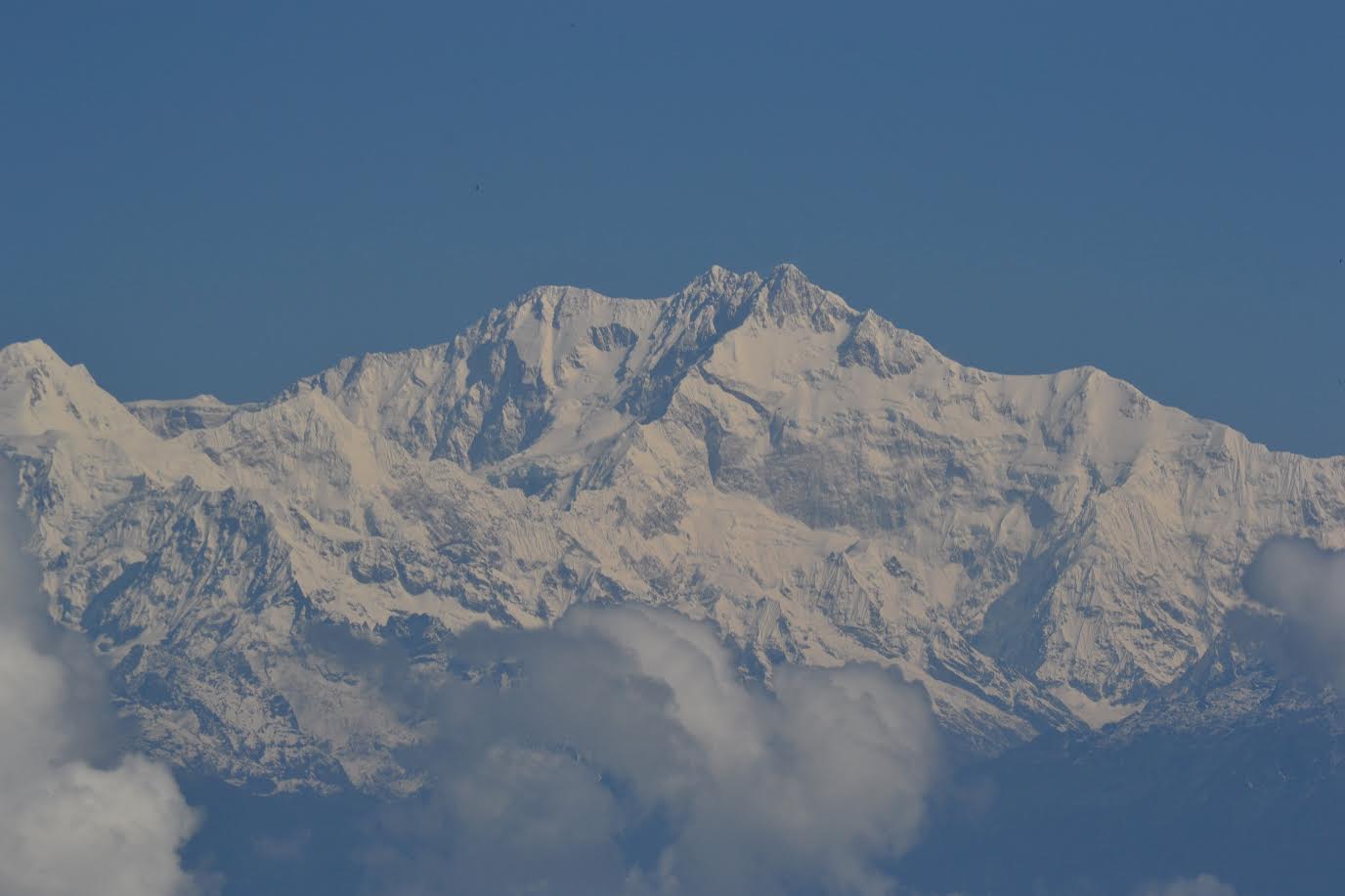
Kangchenjunga.
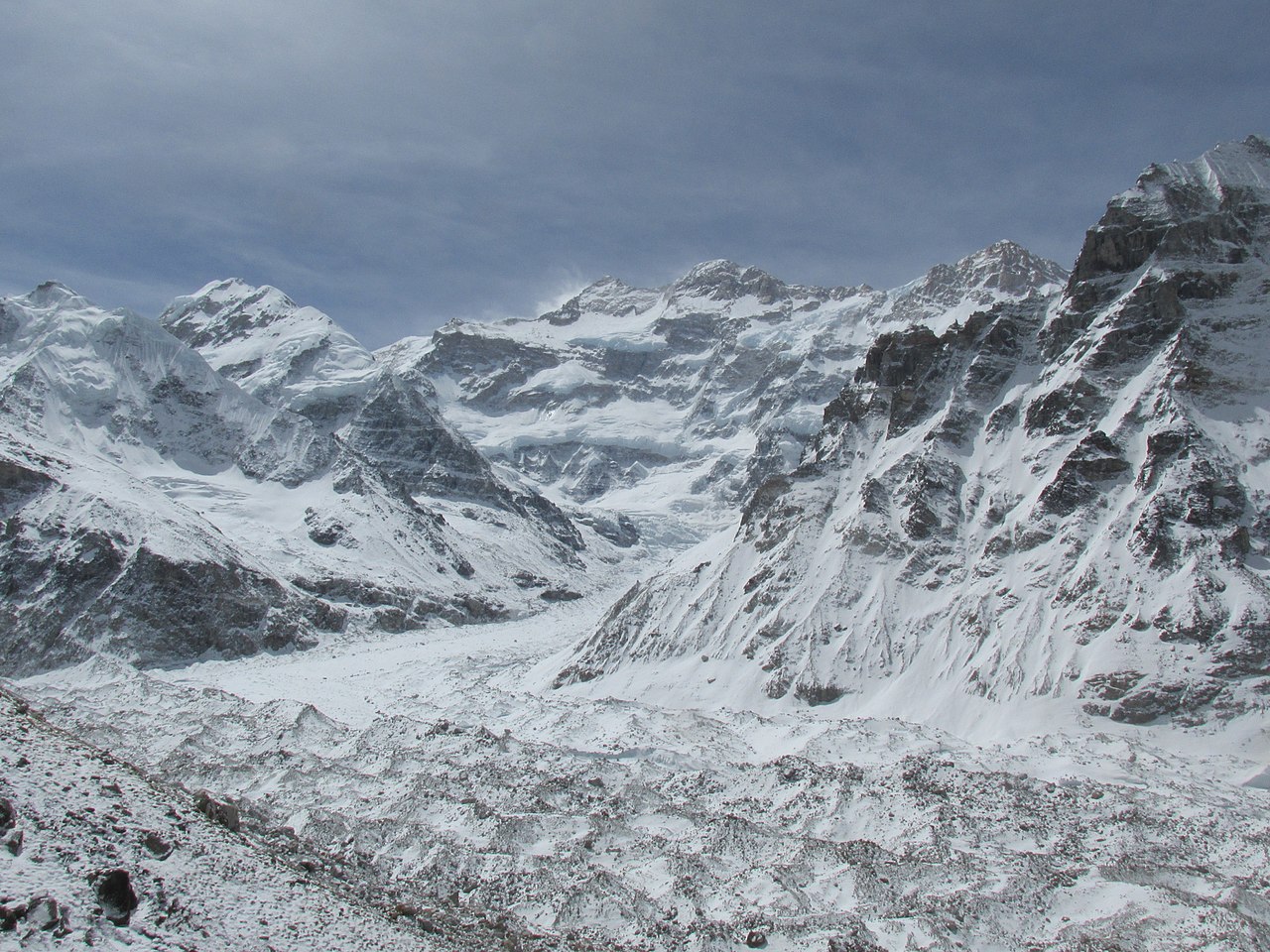
Kangchenjunga.
Kangchenjunga
April, 2025
28,169 ft.
Up until 1852, when better measuring techniques were developed, Mt. Kangchenjunga was widely thought to be the world’s highest mountain. Today, accurately measured at 28,169 feet, it’s officially recognized as the world’s 3rd highest summit. With Everest being the highest peak on earth, and K2 notorious for its difficulty, fame and notoriety for Kangchenjunga diminished despite being highly recognized within the mountaineering community. While Everest was indeed the original goal for summits4Sight, I have come to understand that it’s not only about the numbers. Climbing Everest today means competing dangerously for space on the mountain as more than 400 climbers plus Sherpas line up towards the summit. With its popularity, expedition costs for Everest have also risen to astronomical levels further diminishing the joys of mountaineering. My summits4Sight journey has taken me from an amateur mountain hiker to a seasoned and experienced 8,000 meter mountaineer who loves being at altitude. So, taking the above, and the advice of my Sherpas into consideration, and with the full support of my sponsors, a decision was recently made to climb Kangchenjunga instead. Just 862 ft lower, Kangchenjunga is considered more challenging and (thankfully) does not attract the crowds seen on Everest. That will undoubtedly make for a more enjoyable experience on the mountain and I am now looking forward to returning to Nepal in the Spring of 2025. Kangchenjunga training begins in August, 2024.